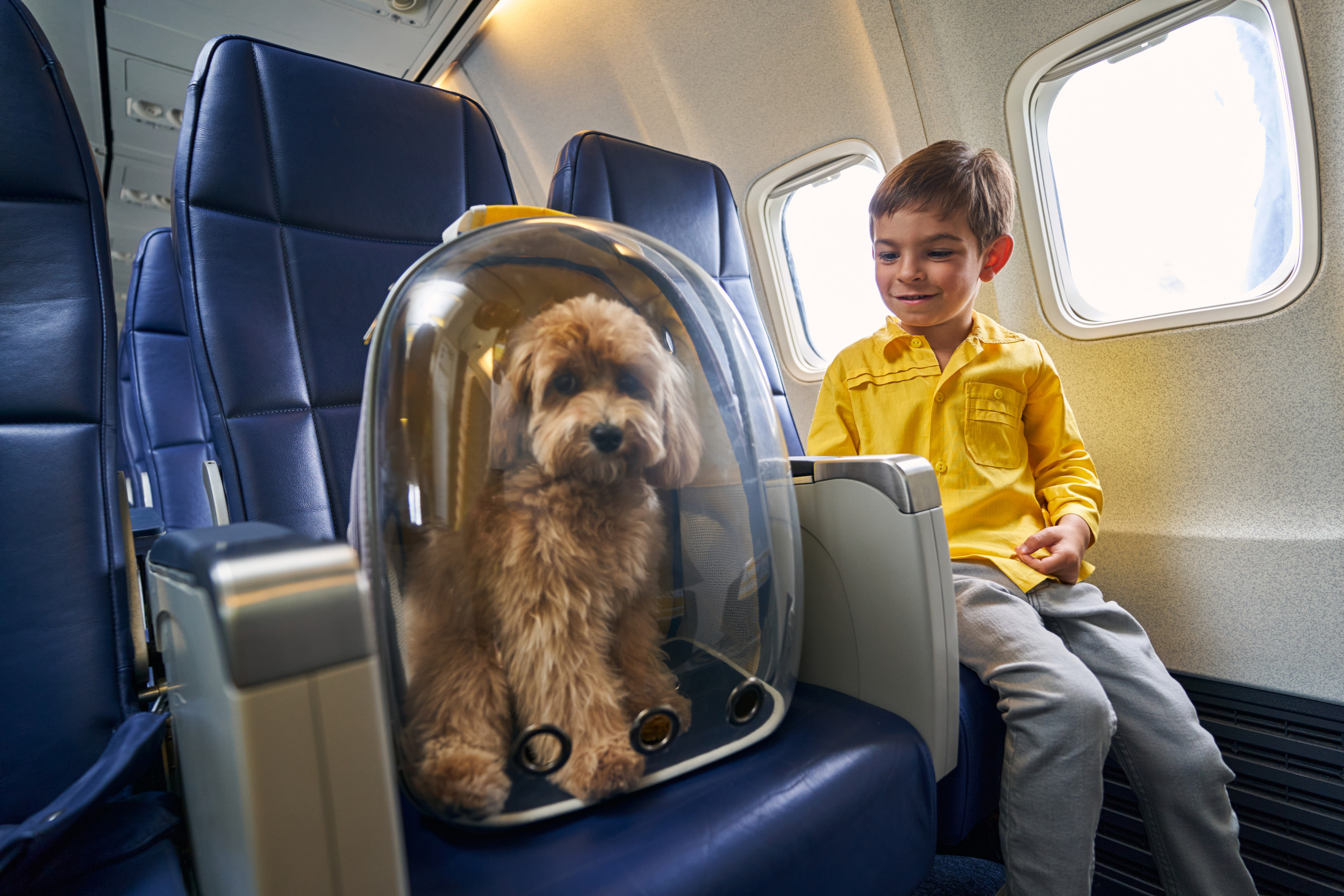Pets Ride in Cabin
Previously, when people travelled with their pets, they caged them and checked them. Leaving with the airline to be put in the luggage area under the plane. Then sent out on the baggage claim carousels to be claimed by their family at their final destination. Although there was little to fear, as there have been limited reports of fatalities when pets have ridden under the plane, families still struggle to leave their pets with the checked luggage. They worry about their pets the way one might worry about their own child. Concerned their fur babies will feel afraid, overwhelmed, or confused.

Moreover, there are people who physically rely on their pets to inform them of when they’re getting low blood sugar. Wehn they’re going to have a seizure. Or may experience cardiac arrest. There are numerous instances in which someone may need their pet with them at all times. A matter of protecting their own safety. As a result, there has been a lot of discussion about whether or not pets should be allowed to ride in the cabin of an airplane alongside the other passengers. Unsurprisingly, people have mixed feelings. By the end of 2023, the need to allow service and support pets in cabins became so high that more than 20 airlines worldwide opened their cabin doors to furry friends.
21 Airlines That Allow Flying With Dogs In Cabin

Airline Requirements
Air Canada, French Bee, TAP Air Portugal, Delta, Lufthansa, and United Airlines are just a few of the many examples. Unsurprisingly, they each have their own requirements, rules, and regulations that include limitations on things like the type of breed, size, and age of the dog. For example, when traveling with a puppy, some airlines require them to be at least eight weeks old. Meanwhile, other airlines require puppies to be at least 12 weeks old. In contrast, United Airlines has no weight or breed limitations; they do require that pets be in a hard or soft carrier that fits under the seat in front of you. However, service animals can ride in the cabin without a carrier. In these cases, they are required to have their own seat.
In almost every example of an airline that allows pets to ride in the cabin, emotional support animals are excluded from service animals. They are permitted to travel only as pets. Therefore, they will only be allowed to ride in the cabin, in their own seat, if they provide some form of medical service, more than to help reduce anxiety. However, general pets and emotional support animals are permitted to ride in the cabin if they meet the requirements.

Emotional Support isn’t Comparable to Service
Emotional support pets provide their owners with a much-needed outlet for their anxiety, which is incredibly common, with around 25 million adults admitting to having Aerophobia. However, one thing sets emotional support animals apart from service animals. Service animals provide their owners with a “service,” usually relating to a medical condition. Moreover, when they cannot prevent a medical mishap, they’re trained to remain focused on and unwaveringly devoted to their human, ensuring that help is on the way. In most cases, pets that are trained as service animals ride for free.
Although some understand the circumstances of this, it’s not surprising that some would feel as though it’s simply an excuse for pets to fly free. In 2019, a disgruntled passenger disclosed to USA TODAY that he’d recently been on a flight that posed some issues for him, namely possible safety concerns. “I love dogs and understand some people have special needs,” he further explained. “But after watching it, I’m not sure what support it provided the owner. It looked more like a free trip for the dog.”
While everyone may not share this sentiment, there are some who would argue that perhaps consideration for passengers who might have allergies or a fear of pets also deserves to be accommodated. Sadly, there is no way to please everyone. However, when traveling with pets, there are some important things to consider that will ultimately make the travel experience more enjoyable for everyone

Things to Consider
First, evaluate how your pet will handle the unusual circumstances. Pets may often be uncomfortable or anxious themselves while traveling. Therefore, it might be kinder to your pet to consider leaving them home and opting for an alternative to being soothed. If leaving them home isn’t an option, it’s recommended to take the steps necessary to help them relax; these include giving them herbal or CBD treatments, packing their favorite toy or blanket, and ensuring the flight isn’t too long as they’ll likely need a bathroom break or 2.
Next, because many pets can become anxious while traveling, consider whether or not it’s worth the cost. Pets not only need their own space but also often need a current vet visit, including several possible vaccinations. A prescription for something to help their anxiety. A bag of their own with food, treats, a leash, waste bags, and more. The list goes on, and everything costs money. Clayton Lopez shared that he and his wife paid an outrageous amount to travel with their cats, only for their cats to be “less happy.”

Last, plan ahead. Research pet-friendly hotels, campsites, and parks nearby. Ensure all necessary documentation and vaccinations have been obtained. Ensure all requirements regarding size, breed, and so on have been met. And accommodate time for pets to take potty breaks and explore. After all, this experience is likely just as new and exciting for them as it is for you.



